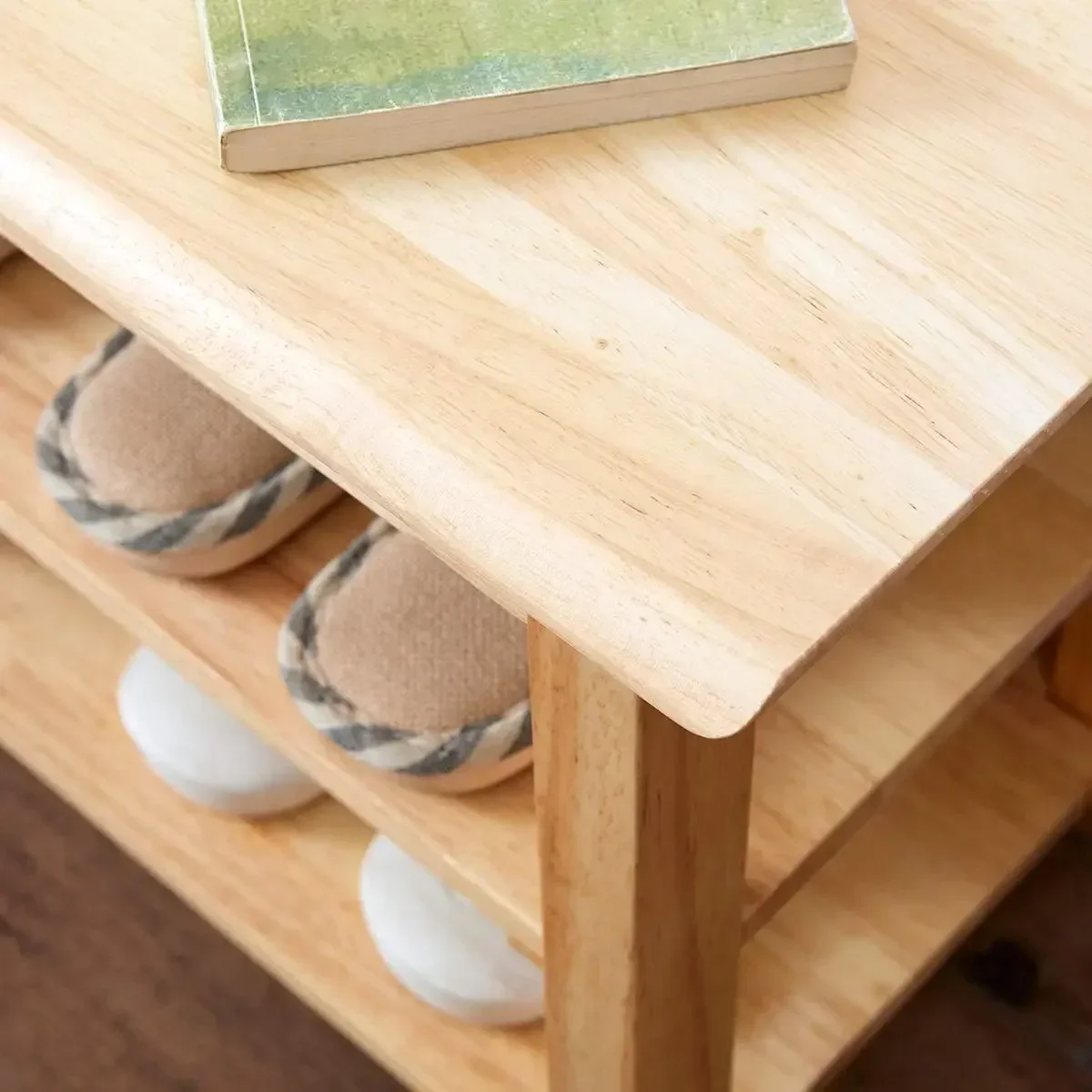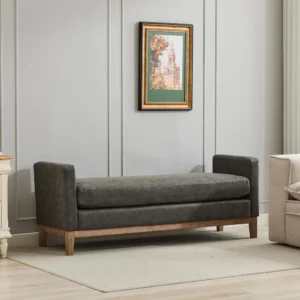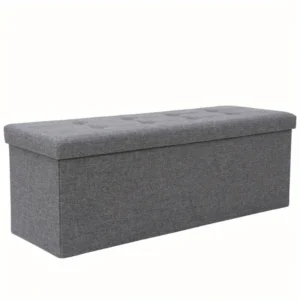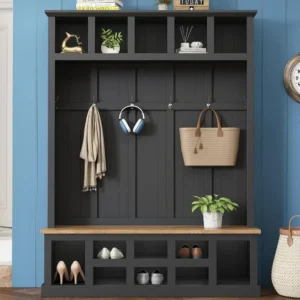Why Your Entryway Deserves Attention: The Case for Thoughtful Organization
Your entryway is more than just a doorway—it’s the crucial transition space between the outside world and your personal sanctuary. It’s where the day begins and ends, where guests form their first impressions, and unfortunately, where clutter tends to accumulate with alarming speed.
Do you find yourself frantically searching for keys while running late? Tripping over a mountain of shoes by the door? Dropping mail, bags, and jackets wherever there’s space? These daily frustrations signal a common problem: an entryway lacking proper organization.
The benefits of addressing this often-overlooked space are twofold. First, there’s the practical aspect—having a designated place for everyday items streamlines your comings and goings, potentially saving precious minutes during hectic mornings. Second, an organized entryway sets the tone for the entire home, creating a welcoming atmosphere that both residents and visitors appreciate.
At the foundation of most successful entryway systems is a well-chosen bench. These versatile pieces do more than provide a seat for removing shoes—they anchor the space and often serve as the cornerstone of your functional mudroom seating solutions when paired with complementary storage elements.
Whether you’re working with a spacious foyer or a modest apartment entry, the right entryway benches combined with thoughtful organization can transform this high-traffic area from a stress-inducing clutter zone into a functional, welcoming introduction to your home.
Assessing Your Space: Finding the Perfect Entryway Solution
Before diving into specific organization solutions, take time to evaluate exactly what you’re working with. This critical first step ensures that your entryway system will truly fit your space and lifestyle.
Start with accurate measurements:
– Width and depth of available floor space
– Ceiling height for potential vertical storage
– Door swing radius (to avoid blocking pathways)
– Distance needed for comfortable passage
Next, consider your household’s specific storage needs based on:
– Number of family members using the space
– Daily routines and activities (sports, dog walking, commuting)
– Seasonal items requiring storage rotation
– Frequency of entertaining guests
Creating effective “entryway zones” can maximize even the tightest spaces:
– Drop zone: Immediate area for keys, mail, and small items
– Transition zone: Space for removing shoes and outerwear
– Storage zone: Longer-term storage for seasonal or less frequently used items
Understanding how to properly organize small entryway bench areas requires creative thinking about vertical space and multi-functionality. Consider how traffic naturally flows through your entryway—where do people tend to pause, where do they need clear passage?
For narrower spaces, maximizing hallway space benches becomes essential. Think about how furniture placement affects movement and whether slim-profile options might work better than traditional pieces.
By thoroughly assessing your specific constraints and opportunities before shopping, you’ll avoid the frustration of bringing home beautiful pieces that simply don’t work in your space.
Choosing the Right Entryway Bench: Styles That Blend Function with Beauty
The perfect entryway bench serves as both a functional cornerstone and style statement for your home’s entrance. Let’s explore your options:
Storage Benches
Storage benches are workhorses of entryway organization, offering seating and concealment in one piece. Our premium entryway bench storage options come in several configurations:
Lift-top storage benches: Provide deep, hidden storage perfect for bulkier seasonal items like winter boots or sports equipment. The entire seat lifts to reveal a large compartment.
Cubby benches: Feature open compartments beneath the seating surface, ideal for frequently used shoes or baskets containing smaller items. These offer easy access without the need to lift anything.
Drawer storage benches: Combine the convenience of pull-out drawers with comfortable seating. Drawers keep smaller items organized and easily accessible.
When considering materials, hardwoods like oak and maple offer exceptional durability for high-traffic areas, while upholstered options provide comfort and softness. Metal frames paired with wood create a modern industrial aesthetic that stands up to daily use.
Hall Trees
For comprehensive organization, hall trees coat rack benches deliver all-in-one solutions. These multifunctional pieces typically feature:
- Seating for comfortable shoe removal
- Hooks or rods for hanging coats and bags
- Shoe storage in cubbies or shelves
- Sometimes include mirror elements or additional shelving
Hall trees work exceptionally well in dedicated entryways with sufficient wall space and are ideal for families needing multiple storage features in one cohesive unit.
Freestanding Benches
Sometimes simpler is better, especially in smaller spaces or when complementing existing storage solutions. A streamlined bench without built-in storage can be paired with wall-mounted hooks, shelves, or baskets to create a custom system that perfectly fits your space constraints.
When selecting any bench style, pay attention to:
– Seat height (17-19 inches is typically most comfortable)
– Weight capacity based on household needs
– Construction quality, especially at joints
– Finish durability for high-traffic areas
– Style compatibility with your home’s overall aesthetic
The right bench serves as the foundation upon which your entire entryway organization system will build.
Maximizing Storage: Smart Add-Ons to Complete Your Entryway System
With your bench as the foundation, complementary storage elements create a complete system that handles everything from tiny keys to bulky winter coats.
Wall-Mounted Solutions
Vertical space is often underutilized but offers tremendous storage potential:
Hooks and racks: Install at varying heights (about 48” for adults, 36” for children) to maximize hanging storage for coats, bags, and accessories. Consider double-hook designs for multiple items in the same footprint.
Floating shelves: Position these 12-18” above your bench to create display space that’s also functional for baskets, decorative elements, or frequently needed items.
Wall-mounted cabinets: Provide concealed storage for items you’d rather not display while maintaining a sleek appearance.
Container Solutions
Corral smaller items to prevent visual chaos:
Baskets and bins: Choose weather-resistant materials for wet umbrellas or muddy items. Natural materials like seagrass or water hyacinth add warmth and texture.
Divided organizers: Perfect for sorting mail, keeping gloves paired, or separating items by family member.
Decorative trays: Create designated landing spots for keys, sunglasses, and phones while adding style.
Specialized Storage
Address specific entryway challenges with targeted solutions:
Shoe organizers: Options range from simple racks to tilted cubbies that display footwear while saving space.
Mail sorters: Prevent paper pileup with wall-mounted sorters that categorize mail by recipient or urgency.
Key hooks or magnetic panels: Establish a consistent home for keys to eliminate frantic morning searches.
Understanding what to place next to entryway bench areas completes your organization system. The key is creating visual cohesion among these elements through consistent materials, finishes, or color palettes.
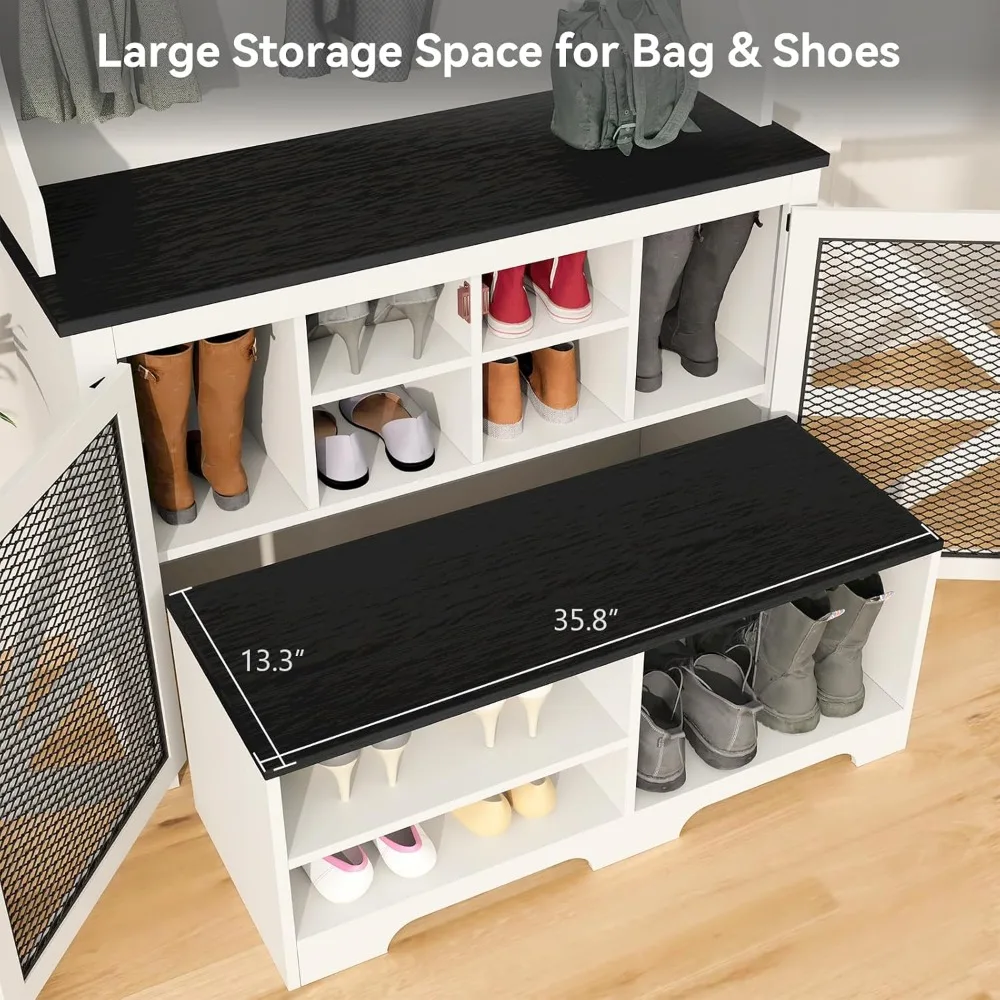
Space-Specific Solutions: Organizing Entryways of All Sizes
Small Entryways
Limited square footage requires strategic thinking. For compact spaces:
- Focus on vertical storage with stacked elements that draw the eye upward
- Choose small entryway bench options with slim profiles (under 36” wide and 15” deep)
- Look for multi-functional pieces like storage ottomans that can serve as both seating and storage
- Use mirrors strategically to create the illusion of more space while serving a practical purpose
- Opt for wall-mounted solutions rather than freestanding whenever possible
- Consider floating shelves above benches to maximize vertical storage without visual heaviness
Every inch counts in small entryways, so choose pieces that serve multiple functions rather than single-purpose items.
Narrow Hallways
Long, narrow spaces present unique challenges:
- Prioritize traffic flow above all else—ensure at least 30” of clear passage
- Consider narrow entryway bench options with shallow depths (12-14”) that don’t protrude too far into walkways
- Create “stations” along the wall that don’t impede movement
- Use wall niches or recessed areas for storage when possible
- Install hooks and storage at staggered heights to maximize wall use
The key to organizing narrow entryway space style is thinking in terms of zones that hug the walls while keeping the central pathway clear.
Generous Entryways
Larger entryways offer more options but require thoughtful planning to prevent wasted space:
- Create distinct functional areas through furniture grouping and rugs
- Use substantial pieces like hall trees or bench-and-cabinet combinations as anchor points
- Consider a central island-style storage unit if space permits
- Establish separate zones for different activities (mail sorting, shoe storage, coat hanging)
- Add comfortable seating beyond basic benches for putting on shoes or waiting for family members
With more space comes the responsibility to ensure every area serves a purpose—avoid “dead zones” that collect clutter simply because they lack designated function.
Implementation Options: Ready-Made vs. DIY Entryway Solutions
When bringing your entryway vision to life, you have two primary paths: purchasing ready-made solutions or creating custom DIY projects.
Ready-Made Solutions
Professionally manufactured entryway furniture offers several advantages:
Pros:
– Immediate availability and quick implementation
– Professional finishes and materials tested for durability
– Standardized sizing compatible with complementary pieces
– Warranty protection for quality issues
– No specialized tools or skills required
Cons:
– Higher upfront cost compared to DIY
– Limited customization for unusual spaces
– Standard dimensions may not perfectly fit your area
– Assembly still required for many pieces
When shopping for quality ready-made options, expect to invest $200-800 for well-constructed storage benches and $300-1000+ for comprehensive hall tree systems, depending on materials and features.
DIY Projects
Custom-built solutions allow complete control over dimensions, materials, and features:
Pros:
– Perfect fit for unusual or challenging spaces
– Material and style customization
– Potential cost savings on materials (though not always)
– Personal satisfaction and customization options
– Ability to modify and expand over time
Cons:
– Requires tools, skills, and time
– Quality depends on builder’s experience
– May lack professional finishing details
– No warranty protection
Beginner-friendly DIY projects might include:
– Simple bench with purchased hairpin legs (2-4 hours)
– Basic wall-mounted hook system (1-2 hours)
– Cubby bench from modified bookcases (4-6 hours)
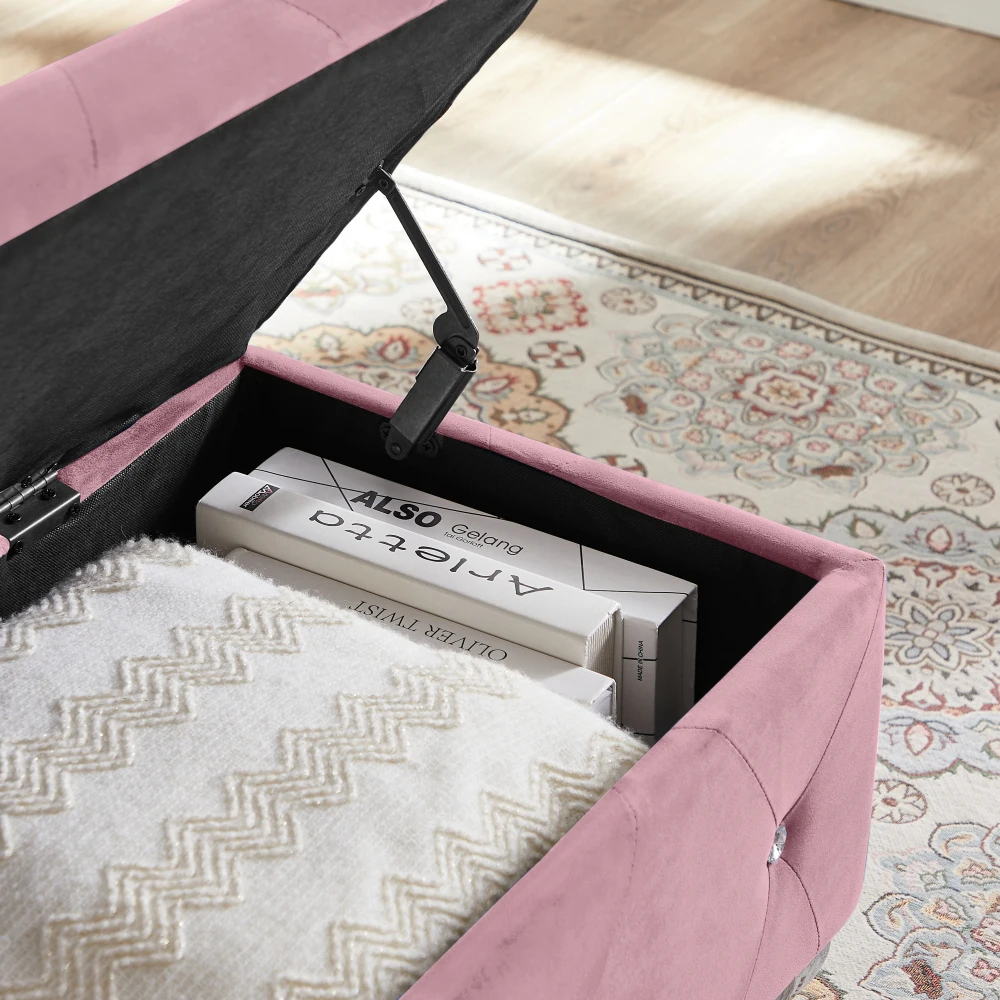
Entryway Bench with Cushion, Mudroom Bench with Cushion, Shoe Bench for Entryway
$1,186.63 Select options This product has multiple variants. The options may be chosen on the product pageCoat Rack Shoe Bench, Corner Entryway Bench, Corner Hall Tree, Shoe Bench for Entryway
$313.58 Select options This product has multiple variants. The options may be chosen on the product pageEntryway Bench with Back, Modern Entryway Bench, Shoe Bench for Entryway
Price range: $463.13 through $474.44 Select options This product has multiple variants. The options may be chosen on the product pageEntryway Bench with Shelf Storage, Shoe Bench for Entryway, Shoe Storage Bench
$194.08 Select options This product has multiple variants. The options may be chosen on the product pageCorner Entryway Bench, Entryway Bench with Cushion, Modern Entryway Bench, Shoe Bench for Entryway
$476.34 Select options This product has multiple variants. The options may be chosen on the product pageBench with Hooks and Storage, Entryway Hall Tree, Mudroom Bench with Cubbies, Mudroom Bench with Shoe Storage
$818.38 Select options This product has multiple variants. The options may be chosen on the product page
Consider your comfort with tools, available time, and whether your space has unusual dimensions that would benefit from custom sizing when deciding between these approaches.
Seasonal Rotation: Keeping Your Entryway Functional Year-Round
An effective entryway organization system must adapt to changing weather and activities throughout the year. Strategic seasonal rotation keeps your space functional without requiring complete reorganization.
During winter months, prioritize:
– Boot trays and drip mats to contain melting snow and slush
– Additional hooks for bulky coats, scarves, and hats
– Basket storage for gloves and mittens
– Umbrella stands with drip trays
As summer arrives, transition to:
– Lighter weight storage for sun hats and caps
– Designated spots for sunscreen and bug spray
– Beach bag and towel storage
– Sandal and flip-flop organization
Mastering mudroom best bench styles involves choosing pieces that accommodate these seasonal shifts through adaptable storage. A bench with removable cushions and washable covers helps manage the transition between muddy spring and dusty summer.
For items not currently in season, establish an off-season storage location elsewhere in your home. Vacuum-sealed bags can reduce the volume of winter items during summer months, while clear bins with labels keep everything organized and easily identifiable when the seasons change again.
The key is creating a system where seasonal rotation becomes a simple 30-minute task rather than a full weekend project. Having designated “homes” for both in-season and off-season items streamlines this process.
Daily Habits: Maintaining Your Organized Entryway System
Even the most thoughtfully designed entryway system can quickly deteriorate without simple maintenance routines. The good news? Effective habits require minimal time investment.
Implement these quick daily practices:
– Ten-second reset before leaving: return keys to hooks, align shoes, hang coats
– Evening “landing strip” check: empty pockets, sort mail, prepare items needed for tomorrow
– One-in-one-out rule: when you bring in a new item, take something else away
For households with children, creating mudroom seating busy homes requires systems that even the youngest family members can follow. Consider:
– Color-coded hooks at appropriate heights
– Picture labels for younger non-readers
– Open baskets for quick toy cleanup
– Regular “beat the timer” five-minute family reset challenges
When systems begin to fail, it often indicates the organization method doesn’t match your actual habits. Rather than forcing behavior change, consider adapting your system. If hooks aren’t being used, perhaps an open basket works better for your family’s coat storage.
Schedule a quick monthly evaluation of what’s working and what isn’t. This preventative maintenance keeps small issues from becoming organizational failures.
Beyond Function: Adding Warmth and Style to Your Organized Entryway
A well-organized entryway doesn’t need to sacrifice style for function—the most welcoming spaces blend both seamlessly. Once your organization foundation is established, thoughtful decorative elements elevate the space.
Consider these elements to enhance your entryway’s appeal:
– Lighting: Combine practical task lighting with ambient options like table lamps or wall sconces to create warmth and ensure safety.
– Textiles: Washable runners protect floors while adding color and pattern; cushions soften bench seating and can be easily swapped seasonally.
– Wall art: Select pieces that withstand humidity fluctuations from opening doors; consider functional art like decorative mirrors that serve double-duty.
– Living elements: Low-maintenance plants bring life to the space; consider hardy varieties that tolerate variable lighting and temperature conditions.
– Personal touches: Incorporate family photos, meaningful objects, or seasonal displays that make the space uniquely yours.
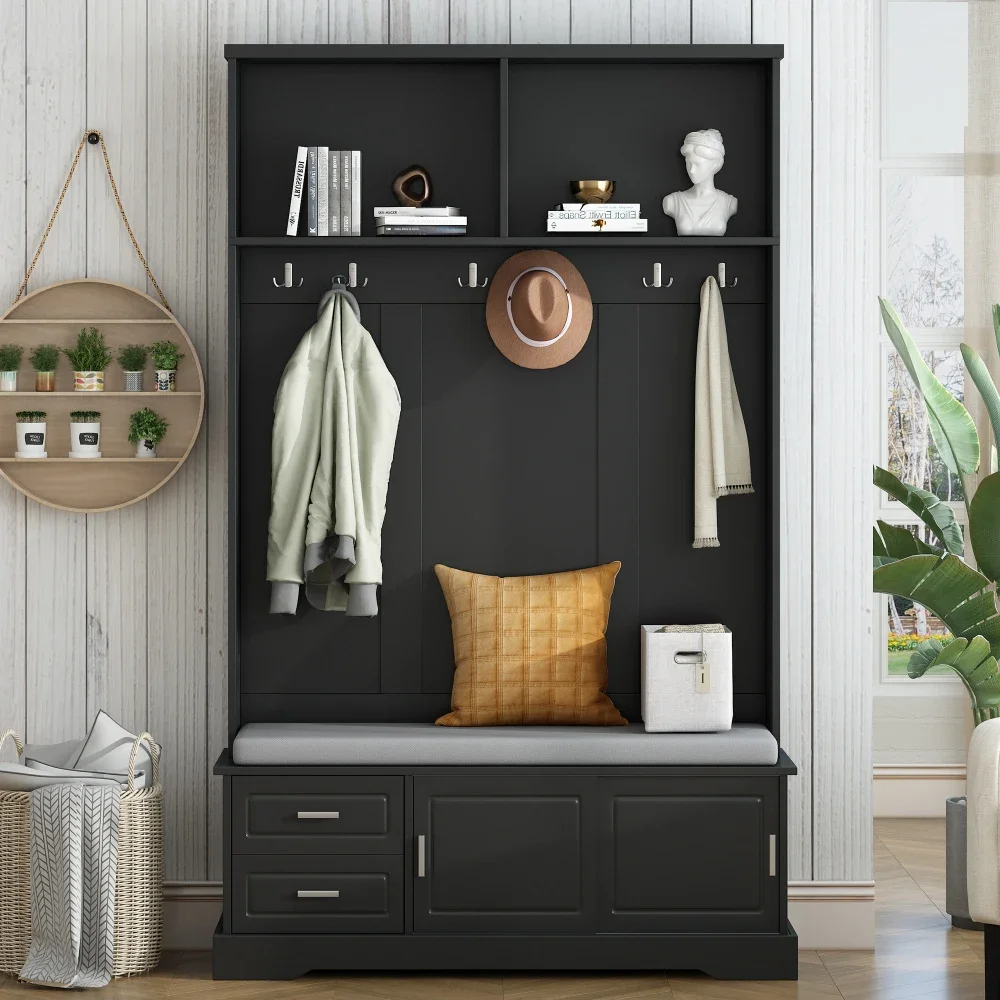
An entryway hall tree offers the perfect balance of organization and aesthetic appeal, providing a cohesive piece that anchors your entryway while allowing for personalization through styling.
The most successful entryways balance practical storage needs with thoughtful design elements. Aim for the 80/20 rule—80% functional organization with 20% purely decorative items that reflect your personal style.
Your Entryway Transformation: Getting Started Today
Transforming your entryway doesn’t require tackling everything at once. Start with this simple three-step approach:
Begin with the bench: Select the foundation piece that matches your space constraints and storage needs. The right bench establishes both the functional and aesthetic direction for your entire system.
Add vertical solutions: Once your bench is in place, expand upward with hooks, shelves, or cabinets that complement your base piece while maximizing vertical storage potential.
Refine with containers: Finally, incorporate baskets, bins, and organizers to corral smaller items and complete your system.
If you’re still wondering do I need entryway bench for your specific situation, consider this: even the simplest bench creates a deliberate transition point between outside and inside, establishing both a physical and psychological boundary that helps maintain organization.
Remember that entryway organization isn’t just about creating a pretty space—it’s about reducing daily stress, streamlining routines, and establishing a welcoming atmosphere that benefits everyone who enters your home. Even small improvements can yield significant results in how you experience your space each day.
With thoughtful planning and the right foundational pieces from Nested Goods, your entryway can become not just organized, but truly transformational.

